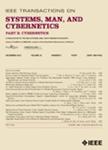版权所有:内蒙古大学图书馆 技术提供:维普资讯• 智图
内蒙古自治区呼和浩特市赛罕区大学西街235号 邮编: 010021

作者机构:Huazhong Univ Sci & Technol Sch Artificial Intelligence & Automat Wuhan 430074 Peoples R China Huazhong Univ Sci & Technol Minist China Key Lab Image Proc & Intelligent Control Educ Wuhan 430074 Peoples R China
出 版 物:《IEEE TRANSACTIONS ON CYBERNETICS》 (IEEE Trans. Cybern.)
年 卷 期:2021年第51卷第2期
页 面:660-672页
核心收录:
学科分类:0808[工学-电气工程] 08[工学] 0811[工学-控制科学与工程] 0812[工学-计算机科学与技术(可授工学、理学学位)]
基 金:Natural Science Foundation of China [61673188, 61761130081] Innovation Group Project of the National Natural Science Foundation of China National Key Research and Development Program of China [2016YFB0800402] Foundation for Innovative Research Groups of Hubei Province of China [2017CFA005] 111 Project on Computational Intelligence and Intelligent Control [B18024] China Post-Doctoral Science Foundation [2019M652646]
主 题:Adaptive control Adaptive control reaction-diffusion neural networks tracking synchronization unknown parameter
摘 要:This paper considers the self-synchronization and tracking synchronization issues for a class of nonidentically coupled neural networks model with unknown parameters and diffusion effects. Using the special structure of neural networks with global Lipschitz activation function, nonidentical terms are treated as external disturbances, which can then be compensated via robust adaptive control techniques. For the case where no common reference trajectory is given in advance, a distributed adaptive controller is proposed to drive the synchronization error to an adjustable bounded area. For the case where a reference trajectory is predesigned, two distributed adaptive controllers are proposed, respectively, to address the tracking synchronization problem with bounded and unbounded reference trajectories, different decomposition methods are given to extract the heterogeneous characteristics. To avoid the appearance of global information, such as the spectrum of the coupling matrix, corresponding adaptive designs on coupling strengths are also provided for both cases. Moreover, the upper bounds of the final synchronization errors can be gradually adjusted according to the parameters of the adaptive designs. Finally, numerical examples are given to test the effectiveness of the control algorithms.